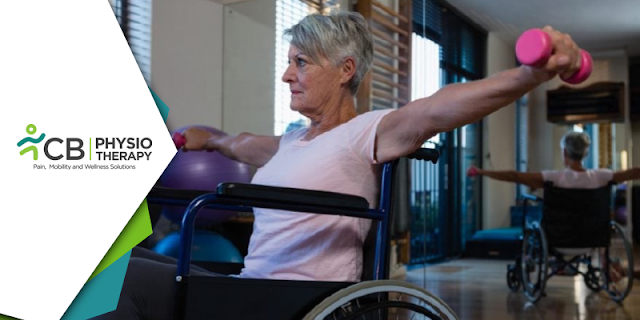High blood pressure, or hypertension, is a prevalent health condition that affects millions of people worldwide. Often referred to as the “silent killer,” hypertension can lead to severe complications such as heart disease, stroke, and kidney failure if left unmanaged. While medication plays a crucial role in controlling high blood pressure, physiotherapy is increasingly being recognized as an effective complementary approach. This blog explores the role of physiotherapy in managing high blood pressure, including its benefits, techniques, and practical tips for incorporating it into daily life.
Understanding High Blood Pressure
Blood pressure measures the force of blood against the walls of arteries. It is recorded in two numbers:
1: Systolic pressure: The pressure when the heart beats.
2: Diastolic pressure: The pressure when the heart rests between beats.
A blood pressure reading of 120/80 mmHg is considered normal. Hypertension is diagnosed when readings consistently exceed 140/90 mmHg.
Role of Physiotherapy in Hypertension Management
Physiotherapy focuses on improving physical function, reducing pain, and promoting overall health. For patients with high blood pressure, it offers several benefits:
1: Lowering Blood Pressure: Regular physical activity, a cornerstone of physiotherapy, helps reduce systolic and diastolic pressure by improving heart efficiency and vascular health.
2: Reducing Stress: Stress is a significant contributor to hypertension. Physiotherapy techniques like relaxation training and breathing exercises help manage stress effectively.
3: Enhancing Cardiovascular Fitness: Controlled exercises improve the heart’s ability to pump blood, reducing the strain on arteries.
4: Addressing Obesity: Physiotherapy aids in weight management, which is crucial for controlling hypertension.
Physiotherapy Techniques for Hypertension
Physiotherapy for high blood pressure is tailored to individual needs and focuses on safe, effective methods. Here are some key techniques:
1. Aerobic Exercise
Aerobic exercises like walking, cycling, or swimming effectively manage hypertension. These activities:
a) Enhance cardiovascular health.
b) Promote weight loss.
c) Improve insulin sensitivity.
Recommendation: Start with 30 minutes of moderate-intensity exercise, five days a week. Gradually increase duration and intensity under professional guidance.
2. Strength Training
While less emphasized, resistance exercises also benefit hypertensive patients by:
a) Reducing fat mass.
b) Increasing lean muscle mass.
c) Improving metabolic health.
Tip: Focus on low-resistance exercises with higher repetitions to avoid excessive strain on the cardiovascular system.
3. Breathing Exercises
Breathing techniques, such as diaphragmatic breathing and pursed-lip breathing, help lower blood pressure by:
a) Activating the parasympathetic nervous system.
b) Reducing stress and anxiety.
c) Enhancing oxygen exchange.
Example: Practice slow, deep breaths for 5–10 minutes daily to calm the nervous system.
4. Stretching and Flexibility Training
Stretching exercises, improve circulation, reduce stiffness, and enhance relaxation. These benefits contribute to better blood pressure control.
Simple Stretches: Include hamstring stretches, shoulder rolls, and neck stretches in your daily routine.
5. Relaxation Techniques
Relaxation therapies, such as progressive muscle relaxation and guided imagery, help mitigate stress-induced blood pressure spikes. Physiotherapists often incorporate mindfulness and meditation into treatment plans.
6. Postural Training
Poor posture can increase strain on the cardiovascular system. Physiotherapy interventions target postural corrections to ensure optimal blood flow and reduce unnecessary strain.
Special Considerations for Hypertensive Patients
While physiotherapy offers immense benefits, there are some precautions to keep in mind:
1: Avoid High-Intensity Exercises: These can spike blood pressure and increase cardiovascular risk.
2: Warm-Up and Cool-Down: Always include a warm-up and cool-down phase to prepare your body and prevent sudden blood pressure changes.
3: Medication Timing: Coordinate exercise schedules with medication timings to minimize potential side effects.
4: Regular Check-Ups: Periodic evaluations with your healthcare provider are essential to monitor progress and make necessary adjustments.
Physiotherapy is a powerful tool for managing high blood pressure. By combining physical activity, stress management, and lifestyle modifications, it addresses the root causes of hypertension while enhancing overall well-being. If you or someone you know is struggling with high blood pressure, consider consulting a physiotherapist to explore tailored interventions. Remember, a proactive approach today can lead to a healthier, pressure-free tomorrow.





